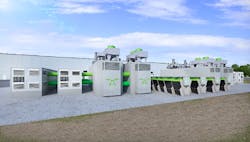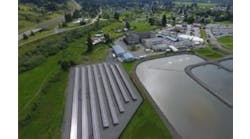Even as the market grows, developers struggle to obtain microgrid financing. Why? What are the obstacles? And how can project developers overcome them? The Microgrid Knowledge white paper, “How to Get Your Microgrid Projects Financed,” explores these issues through interviews with prominent developers, financiers and other sources. Below is an excerpt.
Download the full report.
It’s critical for developers to take a number of steps to obtain financing.
Chief among them is speaking the financiers’ language and being clear about a project’s financial risks and rewards.
Developers should identify the value streams microgrids produce through their resiliency and ability to island from the grid and integrate numerous forms of distributed energy resources (DERs), notes a Navigant Research white paper. To maximize returns, developers should focus on markets with high electricity prices and low fuel prices, demand charges and time-of-use rates. They should also concentrate on markets that place a value on ancillary services.
With this knowledge about the potential returns, investors have a better feel for how to price their package for developers.
When identifying the risks associated with developing microgrids and to successfully pitch microgrid projects, developers should include the potential for problems gaining permits and interconnection agreements with utilities. Another risk might be laws or regulations subject to change by the federal or state government. States might eliminate or reduce solar incentives, for example. Changing regulations for common microgrid hosts, such as cannabis or healthcare industries, is another potential risk.
To maximize returns, developers should focus on markets with high electricity prices and low fuel prices, demand charges and time-of-use rates.
With such information available from developers, financiers can structure contracts to reduce risks. Contract provisions might include conditions that identify the scenarios under which parties can exit or alter contracts.
How to connect with financiers
Microgrid developers also need to communicate effectively with financiers—to speak their language. They tend to lack experience in this area.
“You can have all the designs in the world but if you can’t find the money to build it, it doesn’t matter.” – Atty. Jerome Garciano
The Microgrid Financing Connection, a program organized as part of the Microgrid Knowledge conference series, offers an opportunity for developers to meet one-on-one with financiers. Financiers and program leaders have made several recommendations on what developers can do to increase their likelihood of winning financing as a result of these sessions.
For example, when they approach financiers, developers need to have pro formas identifying costs, risks and insurance, as well as all of the inflows and outflows of the project. It’s important to show a rate of return that’s positive and believable.
Some industry members even suggest that developers tailor their designs around the needs of the financiers, instead of doing designs first.
Starting with the financing would ensure that developers’ designs would be a fit for the financier, and could bypass the hassle of having to redesign complex microgrid systems for the sake of conforming to financing terms later in the process.
“You can have all the designs in the world but if you can’t find the money to build it, it doesn’t matter,” says Jerome Garciano, an attorney who focuses on renewable energy transactions.
Know the language
Interested in connecting with microgrid financiers? Apply to participate in the Microgrid Financing Connection, taking place May 14-16 at Microgrid 2019.
It’s important that developers understand the financiers’ language, including:
Securitization: Specific assets are pledged as collateral for securities, creating asset-backed securities.
Internal rate of return (IRR): The rate that communicates the present value of the expected future cash inflows and outflows. The IRR measures the rate of return on a project, but assumes all cash flows can be reinvested at the IRR rate.
Cost of capital: The required return a company needs in order to make a project worthwhile; the rate used to discount a project’s cash flows. Also called the “hurdle rate.”
It’s also critical to ensure all parties involved in a project have proven track records.
“The top level of the criteria is the same for every sector for all project finance, whether it’s fuel cells or energy efficiency, or microgrids,” says Jigar Shah, co-founder and president of Generate Capital. “We only want to use equipment that’s proven and can be verified by an independent engineer. We want a contract that’s bankable. And lastly, we want a group we can trust doing the maintenance on the projects.”
Developers should also identify whether they plan to support the microgrid once it’s online. They should consider designs based on customers, or “anchors,” that can handle the most risk.
Focus on the financiers’ problems
Financiers want to know how they can safely invest their money and their expected rate of return. They expect developers to flex a little to meet their needs.
To get connected with qualified financiers looking to back microgrids, pitch microgrid projects through the Microgrid Financing Connection.
Next week, this series on how to get your microgrid projects financed will cover how standardizing microgrids can boost their scalability. And don’t miss the excerpt from the new special report that focused on overcoming obstacles to microgrid financing.
Download the full whitepaper, How to Get Your Microgrid Projects Financed, free of charge, courtesy of Scale Microgrid Solutions.







